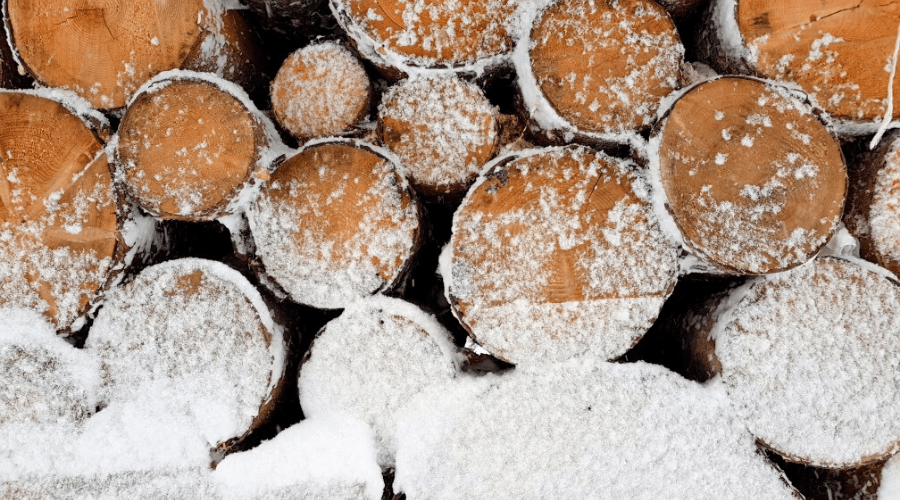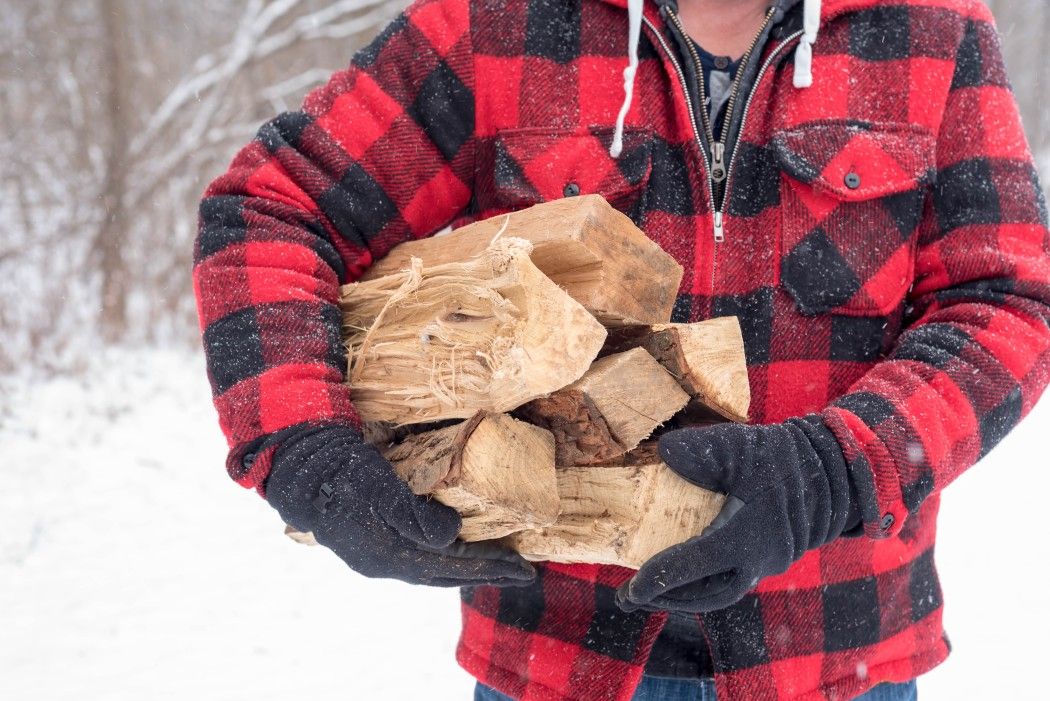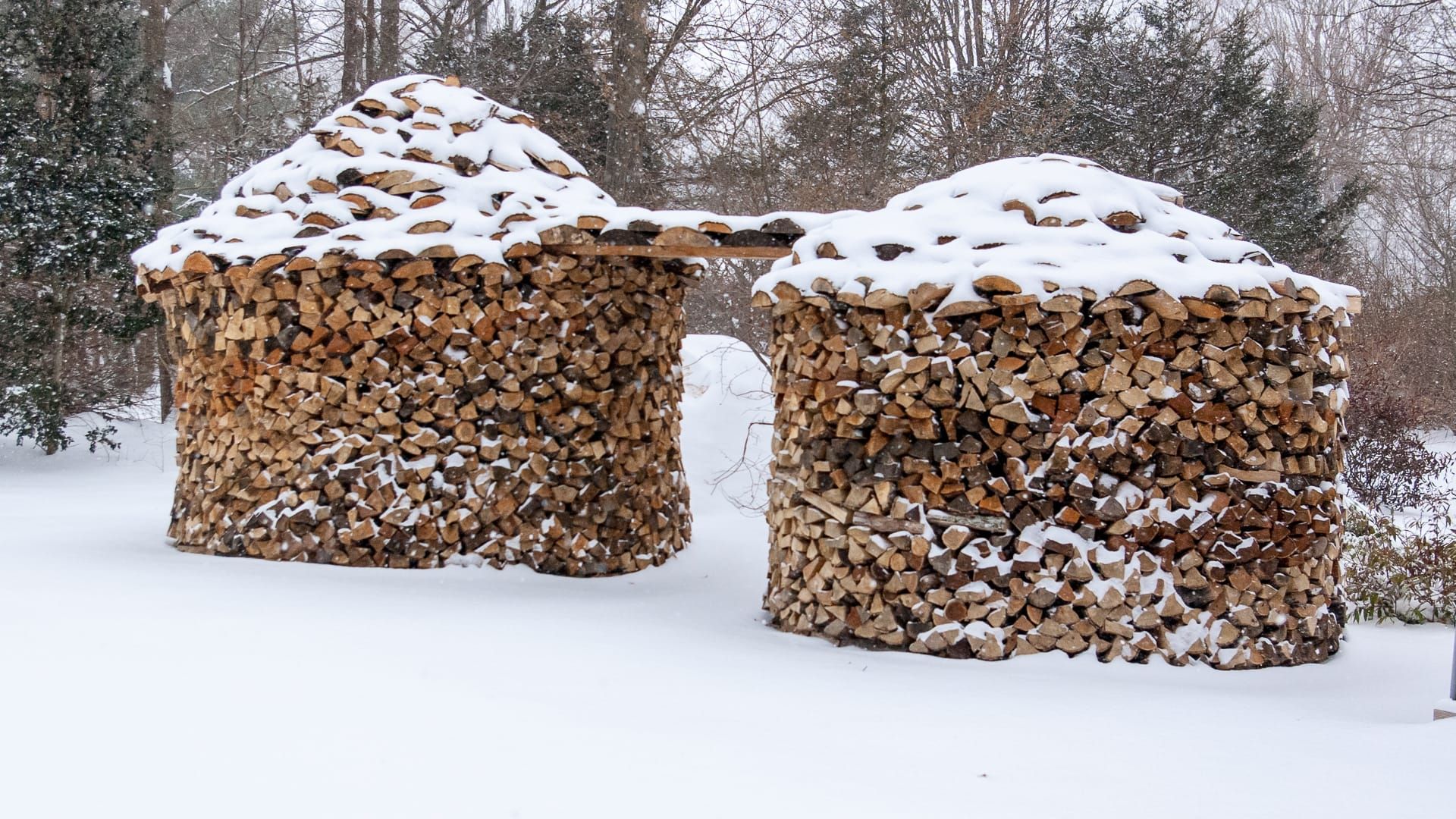Managing to keep enough dry firewood to avoid a mid-winter shortage can be a challenge, and burning wet wood causes significantly more smoke, pops, and sparks than properly dried wood.
But, what if you run out of dry wood or have just cut fresh wood during the coldest months of the year? You'll need to dry wood during winter—but how? Is it even possible? These are our expert answers to your questions: here is everything you need to know about winter-time firewood drying.
Drying Firewood in Winter: A Guide
It isn't ideal to have a stack of greenwood in December, but sometimes that's what happens. There are ways to work around the high water content of unseasoned wood in a pinch, but it does require some foresight and a bit of patience.
Is it Possible to Dry Firewood in Winter?
Yes, but firewood dries slower in winter. Sunlight—one of the key ingredients for drying wood—is in short supply in winter. Though drier winter air helps extract some moisture from the firewood, the process is much slower than in warmer weather.
How to Know if Firewood is Dry
Firewood burns best when it has less than 20-percent moisture. Luckily, there are a few simple ways to determine if your firewood is ready to burn. The simplest and most effective is to use a moisture meter.
Color
Freshly cut wood has a bright green or brown color to it. As the firewood dries, it changes color. Properly dried firewood should be a dull, gray color. However, if your firewood gets a lot of direct sunlight, it should be a light yellow or white.
Bark
A visual inspection of your stack of dry wood should show gaps between the bark and wood. Once firewood has lost enough moisture, the bark easily separates from the wood.
If you can't separate the bark, the wood might still be green. Use a knife to inspect the cambium, the layer between the wood and bark. It will appear green if the wood isn't yet dry.
Sound
Try banging two pieces of wood together. What kind of sound did you hear? Dry wood sounds hollow, making a crisp noise. A dull, damp thud means your firewood still has too much moisture inside.
How to Stack Firewood for Optimal Winter Drying
Credit: Saws & Splitters
Sun exposure is critical to drying wood no matter the season. If possible, place your firewood stacks in an area with excellent southern sun exposure.
You can use various building materials such as bricks, cinder blocks, or logs to start a platform for stacking the wood. Stack the firewood on the raised platform with at least one side exposed to allow wind to help dry the wood.
Once stacked, cover the firewood to prevent rain or snow from damaging the wood. For best results, cover only the top of the pile, leaving the sides and bottom open for airflow. The firewood will dry rapidly without being completely soaked from above.
An open-sided shed offers great protection. However, you can also use a tarp or metal sheeting to protect your firewood just as easily and for a much more affordable price.
Drying Firewood in Winter: FAQs
How long does it take to dry firewood?
While it depends on the type of wood, you're using, drying firewood takes at least six months. Some varieties of wood can take up to two years to dry.
What are the dangers of burning wet firewood?
Wet firewood creates more smoke and creosote than dry wood. These build up rapidly in your chimney, creating a real fire hazard to be aware of. Some smoke can also escape your fireplace, exposing you and your family to potentially dangerous particles in the air. Further, some wet wood may expel hot embers or sparks that can cause accidental house fires—costly or even fatal to the homeowners.
Can firewood go bad?
Yes, firewood can go bad. That said, properly stored firewood will stay good for many years. To avoid your wood going bad, you should store firewood in a dry, protected place, like a woodshed. Firewood stacks with covers are equally good "storage" and prevent the wood from going bad.
If your firewood gets wet too much and too often, however, it can indeed mold or rot. Moldy and rotten firewood isn't safe to burn, and rotten wood should only be burned outside.
A Final Word About Drying Firewood in Winter
If you need to finish drying firewood this winter, or plan to cut fresh wood for that matter, you have no fear that firewood drying is winter-friendly. Hopefully, our article answered any of your questions or concerns about drying firewood in winter. If you have firewood to dry, you may find our firewood seasoning guide useful as well.
Do you have a tip or trick for drying firewood in winter? If so, feel free to share it with our audience in the comments section below. Happy firewood drying season!



